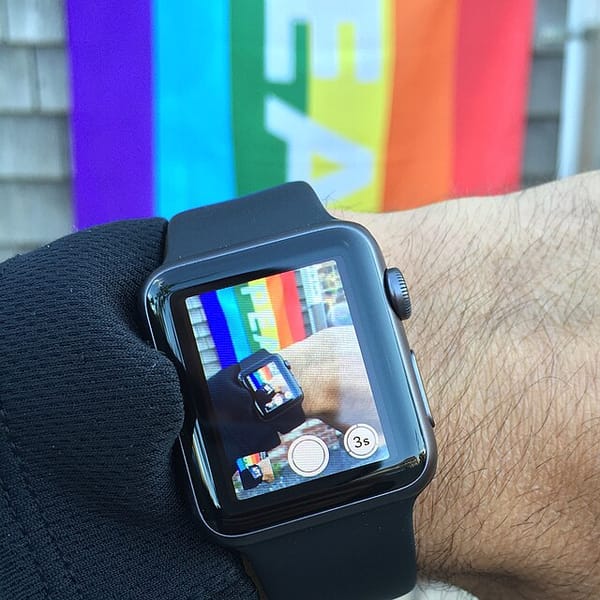Sustainable fashion’s “AI” blindspots: Why the same scrutiny isn’t applied to tech hype
Your TL;DR Briefing on things worth tracking — and talking about over your next power lunch. *Wink.* This time the thing is the cognitive dissonance in fashion around “AI.” It won’t stop the climate crisis but it might take your photographer pal's next gig.

The thing is:
For decades, an interdisciplinary movement of environmentalists, activists, scientists, journalists, designers, labor organizers and many others have vocally called for brands to address the negative impacts their businesses have throughout the supply chain. (Full disclosure: I’ve been in the fray. For instance, I conceived of and edit this annual COP report on fashion’s climate inaction. I worked on the copy for an Instagram carousel for Emma Watson’s social team about it way back in COP26 days, laughs out loud. I could go on.)
That movement picked up pace in the 2010s as fast fashion sped up. It urgently called for the industry to reduce its runaway carbon emissions. Pay garment workers living wages. End fast fashion’s linear take-make-waste business model, which sends millions of fossil fuel-derived materials to landfills where they’ll take up to centuries to decompose.
But, of course, when you look into the data on almost any consequential issue, the trend has been in the wrong direction. Why? Fast fashion. Surely, one could never honestly apply the term “sustainable” to any element of the fast fashion business model, the driver of much of the industry’s worsening impacts. It’s not a model confined to fast fashion anymore, either — it’s a way of doing business that’s also trickled over into some brands in the luxury, sportswear and other segments of the industry, where many consumers observe stuff also feels a bit trashier.
For years, this didn’t stop many of the biggest and fastest brands from appropriating sustainability messaging when it was profitable for them to do so, a topic I spoke on this week at a panel hosted by the British Fashion Council. Fast fashion brands co-opted it and greenwashed it while never really intending to implement any of what it actually could mean to become a more sustainable brand.
Certainly, fast fashion and sustainable are equally vague terms, though we can take them at face value for this briefing as volume-based business models focused on selling more clothes than the planet needs. Sustainability is, in essence, the inverse of that. A sustainable fashion industry would be one operating within planetary boundaries, respecting Indigenous knowledge and craft, and reframing our perspective on what something costs beyond the sticker price.
Sustainable fashion activists and journalists alike know this. It’s why advocacy organizations have rigorously critiqued brands’ sustainability claims through years of often fierce campaigning. And it’s why accountability journalists have vigorously reported on the disconnect between what brands say and what’s happening in their supply chains. And yet, the floor from fast fashion has lowered to ultra fast fashion. The failure isn’t on the part of the movement calling for brands to do the right thing. It’s the incentives in our current fashion system working as one could expect they would.
But that’s why it’s so ironic to observe some in the sustainable fashion space not applying the same critical lens to the environmental and human rights concerns to another industry’s complex and opaque supply chain: “AI.” Worse, some in the sustainable fashion space have become deluded with the grandiose claims spun by Big Tech; they’ve fallen prey to techno-solutionism. And that might prove to be a distraction from implementing actual solutions.
All the while, the more harmful effects of the tech hype are already visible. Synthetically generated designs are becoming synthetic garments, speeding up all elements of the fast fashion (dis)value chain from design theft through to the promotional slop. In doing so, experts warn that using “AI” to speed up this production could further “fuel overconsumption,” lead to brands “breaching copyrights” and maybe resulting in an “algorithmic monoculture,” as Time reported last year.
To that end, one artist filed a lawsuit against ultra-fast fashion giant SHEIN last April for using generative “AI” to allegedly copy their work. Fast fashion brand Mango even replaced human models with “AI models” in a recent campaign. Meanwhile, synthetic articles generated by “AI” appear designed to greenwash the search engine result pages when someone googled Temu, Ethical Consumer wrote last year. And most absurdly, Puma released an experimental campaign where they bypassed human creative teams altogether and used so-called “AI agents to create an ad from scratch,” as Ad Age reported last week. Joining up these dots reveals how unquestioned tech hype is often little more than a red herring, and we’re all paying for it.
The thing about that is:
This week, a gathering of the fashion industry in London connected a few disparate threads in my mind about the failure of what some refer to as “techno-solutionism,” the idea that every problem is a problem to be solved through technology. (It is not.)
“We already have the solutions” — that was a sentiment I heard repeated several times on Thursday at the fifth-annual Institute of Positive Fashion (IPF) Forum. Fashion is, in many ways, a low-tech industry — decarbonizing factories, for instance, doesn’t really require new technology. It requires brands helping their suppliers upgrade to renewable forms of energy, among other interventions. It’s not hard to imagine the solutions. It’s much harder to imagine modern day brands, who maximize profits for shareholders, paying the bill. The implication is that issues such as decarbonizing fashion’s supply chain can be done. It is not easy. But what’s missing is, of course, action and investment to make progress.
Those are the kinds of conversations you get into at the IPF Forum, an always motivational day of sessions hosted by the British Fashion Council at 180 Studios. The event brings together a diverse crowd: brands, journalists, student designers, NGOs, activists, policy wonks and even a few elected officials.
I was there speaking about my editorial work in the fashion sector — on a panel about communications strategy, moderated by Kati Chitrakorn, editor for CNN Style, and joined by several compelling speakers from small and large brands (upcycling innovators ELV Denim, top-rated B Corp DEPLOY and British heritage brand Mulberry).
The key takeaway from my panel was, yes, there are many creative opportunities to engage culture and to galvanize citizens to act. But ultimately sustainable business practices and supply chain transparency need to happen before a brand attempts a feel-good campaign. As much as we expect consumers to “vote with their wallets,” as the line often goes, we should be expecting brands to do so even more. And I sensed a level of frustration from some in the room that we’ve been talking about many of the same things for more than a decade.
This era defined by way too much cheap trash is, after all, not the only model that exists — in fact, some readers will remember a fashion system before fast fashion. In many parts of the world, more sustainable models exist in practice, on a small and localized scale. In that view, the solution might look like less tech rather than more — slowing down rather than speeding up.
“We have a long recovery ahead of us and I believe that if those of us who work in fashion cannot be honest about something as simple as production volumes, then we are not ready for the colossal task of transitioning our industry from disposable to circular,” Liz Ricketts, founder and executive director of the Or Foundation, wrote in September in Teen Vogue. “Being honest about overproduction will not end fashion; it will save it.” That was the sentiment I took away from the event, too.
Certainly, there is a case for investing in truly innovative technologies such as textile-to-textile recycling — especially given how many synthetic blended fibers end up wasted, mounding up in piles you can literally see from space. But even here, isn’t the more urgent problem addressing the root cause of all this waste, the overproduction of that many clothes in the first place?





